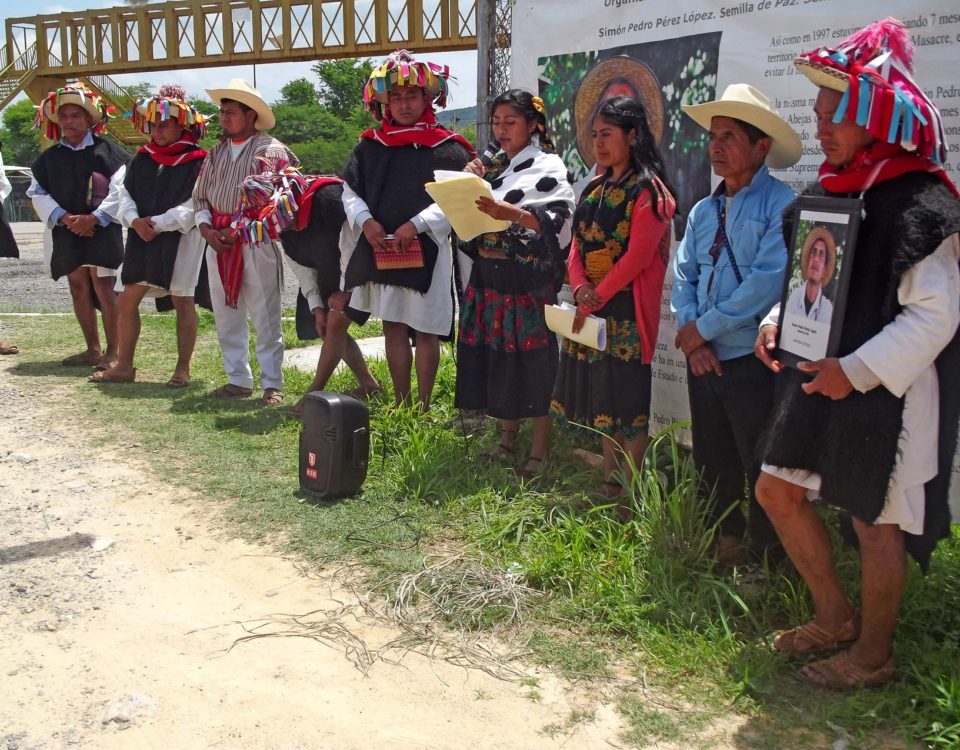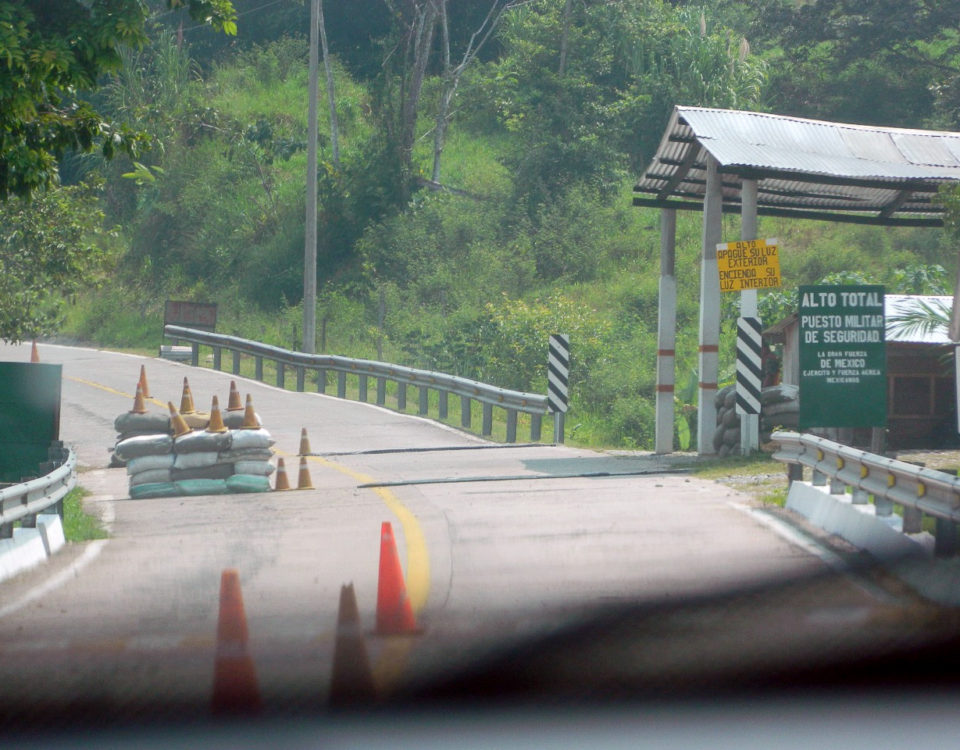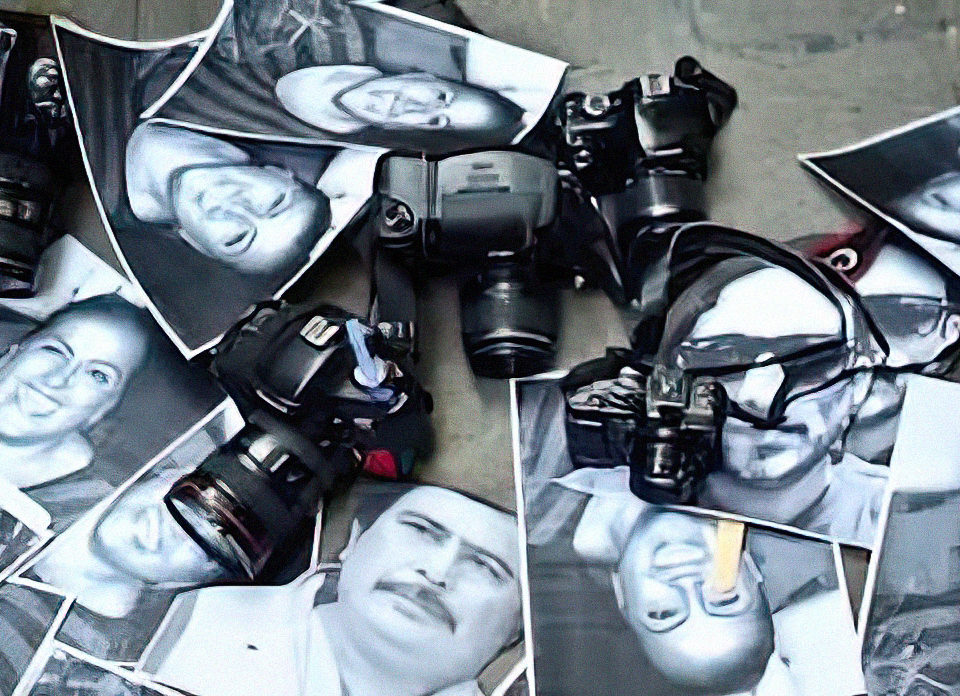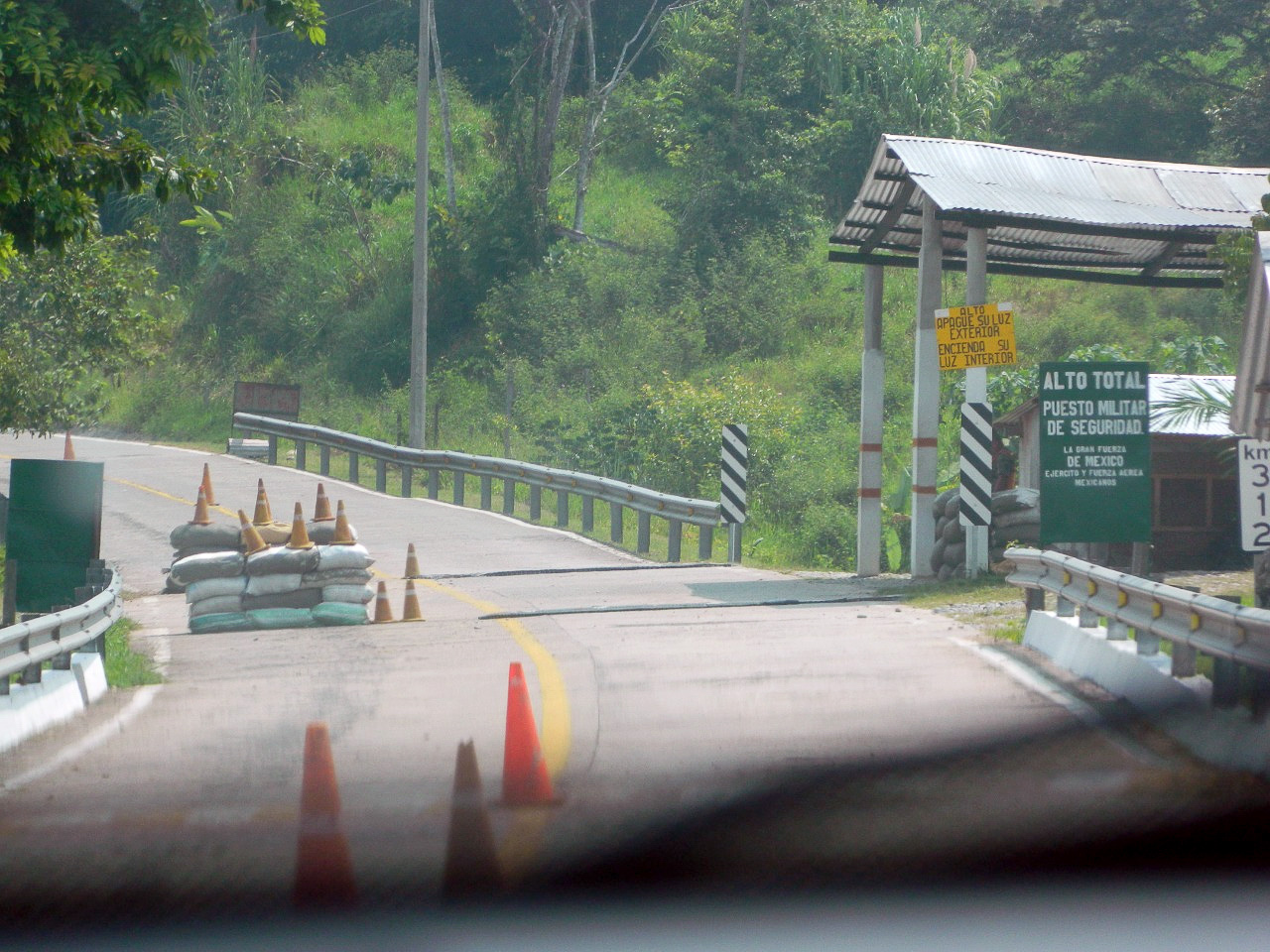
FOCUS: Migration as a justification for militarization and new strategies of territorial control
12/09/2022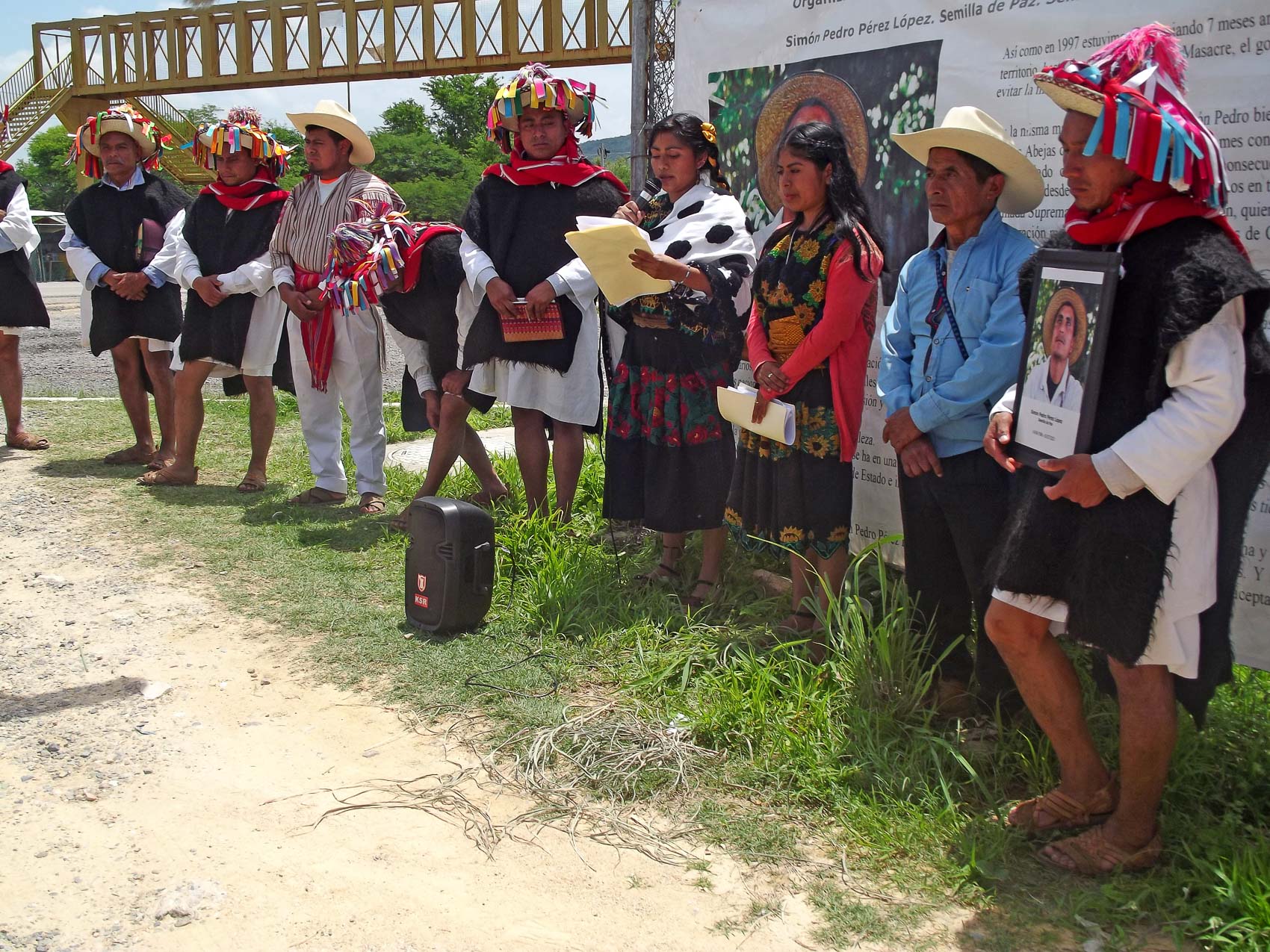
SIPAZ Activities (From mid-May to mid-August 2022)
12/09/2022Resolving conflicts with peace “(…) does not mean becoming passive victims, nor being weak, docile and resigned in the face of violence. Rather, it means disarming evil, defusing violence and resisting oppression.”
The latest events in Chiapas and Mexico show a war with other faces and other forms. The media reports on organized crime groups that kidnap and disappear people; the strategies of criminalization and murder of human rights defenders in the country no longer exempt religious spaces; there are confrontations that claim the lives of civilians and a constant attack against the dignity of indigenous peoples. But the search for justice and peace also manifests itself in ways other than violence. In a religious act, the voice seeks to be heard, and the demand for peace and the defense of life wave the white flags that, in this less traditional war, are not a symbol of surrender but of hope, faith, resistance and of dignity.
“Pilgrimage to recover the strength to walk together”
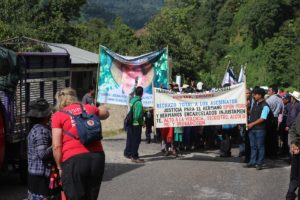
Peregrinación del Pueblo Creyente de la Diócesis de San Cristóbal de Las Casas, julio de 2022 © SIPAZ
The multiple acts of violence that seem to have broken a mirage have forced civil society, and especially members of the Catholic Church, to call for actions for peace. However, the long walk of the Diocese of San Cristobal de Las Casas through the sinuous realities of Chiapas began with the arrival of Jtatic Samuel Ruiz in the state, as explained by Father Jose Luis Vargas de Cancuc: “The Diocese of San Cristobal has It has been a diocese to walk with the poor, which invited us to seek passion for service in a diocese in conflict, where violence was present.”
In this sense, pilgrimage, which denotes a walk through lands that present a difficulty, “serves to recover the strength to walk together, so that our struggle and our word have strength”; and in the current context, “it is a very strong voice of rejection of violence that shows us that this is the path to peace”, says the priest.
Churches of other confessions of faith have also joined the initiatives of the Catholic Church, as was the case of the Pilgrimage for Peace, for Life, against Violence and Discrimination in Las Margaritas, last March 2022. From this corner of the border hit by so much violence caused by confrontation between criminal groups, the “Alliance of Churches for Peace” called for a peaceful pilgrimage after witnessing a confrontation that ended the lives of two people and left several wounded in the center. There they expressed that “in the midst of the serious deterioration that our entire state of Chiapas is now experiencing, manifested in expressions of great insecurity and that has brought many deaths, (…) we express our concern about the realities that people suffer and live in, in which It seems that life has lost meaning.” The same streets that had been dyed red were now dressed in white, adorning themselves with flowers and balloons, and playing songs and slogans calling for peace and unity among the peoples.
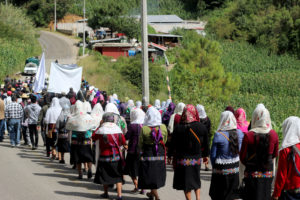
Peregrinación del Pueblo Creyente de la Diócesis de San Cristóbal de Las Casas, julio de 2022 © SIPAZ
On another note, the pilgrimage convened by the Justice, Peace and Integrity of Creation Commission; the Franciscan Family; the Organization of United Native Peoples; The Commission for the Defense of Human Rights and the Committee in Defense of Life, Territory and Mother Earth brought together the Zoque and Tsotsil peoples who demanded “peace, security and justice” in the Northern Zone of the state. “No, no, praying is not enough, many things are needed to achieve peace”, the attendees intoned in a song.
Already in the month of June, Father Marcelo Perez Perez, pastor of the church of Guadalupe, called for a pilgrimage for peace, after armed groups shot, burned vehicles and blocked streets in San Cristobal de Las Casas. In the pilgrimage Jesus Christ, Peace, Life and Hope in San Cristobal, dozens of people dressed in white, with flags and banners, toured some streets of the city with the same slogan: Peace, Life and Hope in the city. “When there is violence, the awareness that we are human beings is lost, we ask to recover the dignity that we have as human beings, to listen to the fifth commandment: Thou shall not kill”, said Father Marcelo.
Believing People looking for changes in Chiapas
The first anniversary of the murder of Simon Pedro Perez Lopez, catechist and defender of the rights of indigenous peoples, marked the first intentions of a pilgrimage in the state. Consequently, “Believing People raised the need to network with parishes and areas, not to walk alone, but to unite”, the Cancuc priest said. This is how the coordination of the Pilgrimage for Life, Peace and Against Violence began, a simultaneous action in eight municipalities of Chiapas.
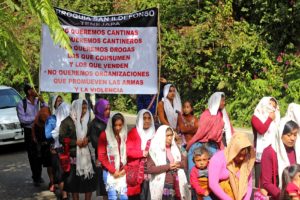
Peregrinación del Pueblo Creyente de la Diócesis de San Cristóbal de Las Casas, julio de 2022 © SIPAZ
In the days prior to this action, the Chiapas State Attorney General’s Office issued an arrest warrant against Father Marcelo Perez Perez in addition to the arrest of five defenders of San Juan Cancuc who had been fighting against militarization. Thus, the demand for justice in the face of the constant criminalization and persecution of defenders of the territory and human rights was added to the demands of the almost 10,000 people who made a pilgrimage throughout the state.
During the pilgrimage, the statement of the Believing People was read: “We express all the abuses and injustices that our peoples and communities experience, especially the violence, insecurity and the territorial dispute caused by organized crime, before which the authorities are exceeded, permissive and colluded by the control system that organized crime exercises in the national territory. There is also the threat to and assassination of social leaders and municipal authorities, as well as threats to pastoral agents of our diocese. We cannot remain silent or insensitive in the face of these sufferings.”
The result of these pilgrimages went beyond the number of participants, it was an act of rebellion against the authorities; of resistance against violence; and of hope facing the rest of the population. The communities took to the streets despite fear and insecurity but supported by other processes and organizations. This walk showed that, in the midst of a hopeless context and thorny paths, the peoples continue to raise their voices and open the gaps to end this war and build peace in an action that, consistent with their demand, manifested itself in a peaceful way.

